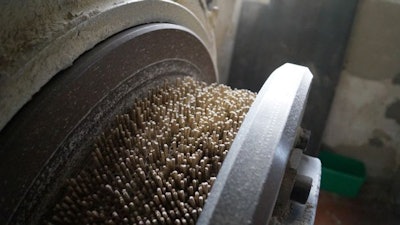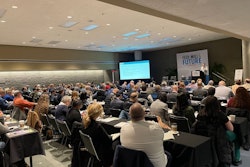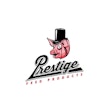
Automated systems deliver on safety, sustainability and efficiency
Automatic roller adjustment is a pellet mill feature which allows operators to adjust roller die clearance remotely while the pellet mill is running and can move the roller die clearance between two extremes.
“Automatic roll adjustments are not a new technology,” said Tommy Davis, sales manager – North America, Andritz Inc., during his TECHTalk held at the International Production & Processing Expo (IPPE), January 25 in Atlanta. “If you have pellet mills, you’ve probably been hearing about auto roll adjust for quite some time. It’s just really in the last couple of years, though, that it’s picking up in its popularity and interest level.”
With automatic roller adjustment, the operator enters the zero point, and then adds a set point to automatically create a die gap versus in a manual setup, which requires the operator to use a turnbuckle or push-pull device to set that gap manually.
Benefits of automatic roller adjustment
- Reduces power consumption
Starting the pellet mill is one of the highest energy peaks in feed production. If the rolls are touching the die during startup or if there is material on the face of that die, it causes resistance and takes more energy to start it.
“If we retract that roll away from the die face, or away from that material, you can have a 65% energy reduction for startup because when you start this pellet mill up, you don’t have that roller touching the material when you actually start to mill up, so less resistance and creates energy savings.”
Davis notes that mills in areas where the local power utility is charging by peak usage, the automated roller adjustment can reduce operation costs.
In addition, companies looking to hit their sustainability targets are especially interested in the technology.
2. Less downtime
Pellet mill plugs are dirty, time-consuming inconveniences for mills; however, the ability to retract the roller – even by a few millimeters – makes it easier to clear the plug and reduce downtime.
“If you’re changing a formula that requires you to take the pellet mill down and clean it out, it will be a lot quicker to clean,” Davis said. “You’re going to be able to be more thorough if you can take that roll and retract it from the die face.”
He mentioned “advanced uses of auto roll” with the addition of sensors to the system, where operators can specify the position of the roles for different formulas.
“If you’re running this specific ration, you know you’re going to have this gap that you want to run and if you’re going to run this then you’re going to have this gap,” he explained, adding that the process can be very automated, more efficient and it allows a way to optimize.
3. Addresses labor shortages, safety concerns
Automatic roller adjustment helps create a safer work atmosphere.
“Your operators now have less hands-on activity with the pellet mill and the die cavity,” he said. “The more that we can keep their hands out of that machine, the safer your operation is going to be.”
Operator turnover can result in a less experienced – and, at times, less talented – workforce.
“We can take some of that out of the equation and automate that process,” he said.
It also helps the feed industry inch toward “lights out” production, a fully automated feed mill operated efficiently by only a few employees.
Considerations
Operators will still have to set the rolls, just like they did before, because you have to give automation zero point, and you’re retracting from that zero point.
The system also requires more parts in the die cavity, adding more complexity and taking up more room.
“It puts some wear parts in that cavity that will have to be monitored,” he said.
Davis suggests millers consider that some of the automatic roll adjust systems have the hydraulics in the die cavity while others place the hydraulics outside the die cavity, leaving everything mechanical within the die cavity.
“You have to weigh the benefits and risks for your operation and decide what’s best for you,” Davis said.
Automatic roller adjustment systems may be retrofittable, but it depends on the pellet mill.















